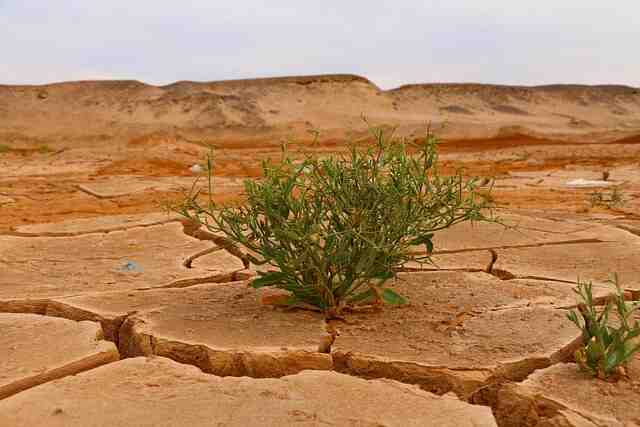🔥 Climate Breakpoint 2025: Why 2025’s Global Heatwave Is a Turning Point for Humanity
If you think last summer was hot, brace yourself, read this Climate Breakpoint for 2025. The global heatwave of 2025 has smashed temperature records, overwhelmed power grids, and put billions of lives at risk.
This isn’t just a seasonal spike—it’s a climate breakpoint: the moment when extreme heat becomes the new normal.
Across cities and countrysides, homes are melting, crops are dying, and health systems are buckling. Whether you’re in the U.S., Europe, Asia, or Africa—you’re feeling the burn.
🌡️ What’s Fueling the 2025 Global Heatwave?
1. El Niño and Oceanic Heat Domes
In addition, this year’s El Niño cycle intensified faster than any in recorded history. Sea temperatures hit all-time highs, warming the air and fueling heat domes across the globe.
These heat domes trap heat for weeks, making cities feel like ovens.
2. Urban Heat Islands Are Amplifying Danger
Cities are built with asphalt and concrete, materials that absorb and radiate heat. This turns urban centers into heat islands, where temperatures soar 5–12°C higher than surrounding areas.
The poor and elderly living in crowded apartments often suffer the most.
3. Deforestation and Wildfires
The Amazon, Indonesia, and Central Africa continue to lose millions of acres annually. Forest loss releases carbon, destroys natural cooling systems, and triggers fires that further raise temperatures.
In 2025, over 7.4 million acres have already burned—many in regions previously safe.
4. Greenhouse Gas Saturation
Moreover, Carbon dioxide and methane levels reached record highs this year, blocking the planet’s ability to cool at night.
Also, this causes nighttime heat spikes, preventing the body from recovering, especially for vulnerable populations.
🚨 Real-Life Impact: What This Heat Means for You

🏥 Climate Breakpoint 2025: Health Systems Are Cracking Under Pressure
Hospitals from New York to New Delhi are overwhelmed. ERs report 3–5x more admissions for heatstroke, dehydration, and cardiac events.
Nurses in Madrid and Phoenix are collapsing on shift.
Also, Doctors warn: “Extreme heat acts like a silent killer. It worsens every chronic illness, from asthma to diabetes.”
🌾 Food Prices Are Soaring
First of all, heatwaves devastate crops. Wheat, corn, and rice yields in key agricultural zones have dropped 12–30%.
This means:
- Grocery prices are skyrocketing
- Food insecurity is spreading into middle-class households
- Hunger is rising in formerly stable countries
🔌 Power Grids Can’t Keep Up
However, AC units are maxed out. Grids are failing. Brownouts and blackouts now happen weekly in over 40 major cities worldwide.
Recommended by Nova News:
First of all, California’s grid declared emergency status 11 times this year—breaking all previous records.
💧 Climate Breakpoint Matters: Water Is Running Dry
Reservoirs are shrinking. The Colorado River, the Yangtze, and the Nile are seeing water levels drop dangerously.
Entire regions now rely on water rations, tank deliveries, and desalination plants.
🧠 The Science Behind the Climate Breakpoint
Climate change doesn’t mean every year is hotter—but 2025 proves the trend.
Average global temperatures are now 1.7°C higher than pre-industrial levels. This pushes us closer to the dreaded 2°C tipping point—where feedback loops (like polar melting and forest collapse) accelerate change even faster.
Feedback loop example:
- Arctic ice melts ➜ less sunlight reflects ➜ oceans absorb more heat ➜ more ice melts
However, Climate scientists warn: “We’re now watching tipping points in real time.”
👨👩👧 Human Stories From the Frontlines
“I lost my brother to a heatstroke in June,” says 33-year-old Ali from Karachi. “The hospital had no beds. No AC. Nothing.”
Additionally, In southern France, 82-year-old Claudette hasn’t left her apartment in 17 days. “My fans broke. I sit in the dark with wet towels on my body.”
Moreover, In rural Arizona, Maria’s teenage son walks four miles daily just to fetch cool water for his siblings. “It’s like survival camp. Only it’s real life.”
These stories aren’t rare. However, they’re the daily reality for millions in 2025.
Recommended by Nova News:
🧭 Climate Breakpoint 2025: What You Must Know to Stay Safe
- 1 in 3 humans now live in extreme heat zones
- Most air conditioners work 20% less efficiently above 40°C
- Cooling centers are saving thousands—but access remains limited
- Climate anxiety is rising, especially among youth (61% report fear about the future)
- The heatwave is worst in areas with poor infrastructure, old buildings, and low-income populations
🧰 Climate Breakpoint 2025: Ultimate Survival Tips for the 2025 Climate Emergency

1. Turn Your Home Into a “Cool Bunker”
- Block all windows during the day
- Hang wet sheets in doorways to cool airflow
- Sleep low: floors stay cooler
2. Water Is Your Lifeline
- Drink every hour, even if not thirsty
- Store 3L/person/day for emergencies
- Add salt or electrolytes if sweating a lot
3. Build a Neighborhood Network
- Share power sources, fans, and water
- Check on the elderly or disabled daily
- Keep a community WhatsApp or text alert system
4. Avoid the “Danger Hours”
- Stay indoors between 11 a.m. and 5 p.m.
- Also, exercise or work before 8 a.m. or after sunset
5. Prep Your Emergency Go-Bag
- Batteries, solar lights, water, canned food
- Cold packs, first aid, electrolyte powder
- IDs, medications, a phone power bank
6. Know the Heat Illness Warning Signs
- Dizziness, confusion, nausea = get help immediately
- Move to shade, cool body, call emergency services
🔍 Climate Breakpoint 2025: The Global Response (And Where It Falls Short)
First of all, some governments are trying:
- Spain, France, and Japan opened national cooling centers
- India deployed mobile water trucks and mist tents
- Kenya added solar coolers to schools and clinics
But these aren’t enough. Most cities lack heat plans. Funding falls short. Vulnerable people are still falling through the cracks.
Climate experts agree: “Without local action, national efforts will never reach everyone.”
💡 Innovation Could Still Save Lives
1. Climate Breakpoint 2025: Tech Solutions
- Heat-reflective roof paint reduces indoor temps by 8–10°C
- Smart thermostats use AI to cut power bills and keep cool
- Urban planners now design “cool corridors” with trees and water features
2. Community Resilience Projects
- Green roofs, rooftop gardens, shaded public spaces
- Solar-powered AC and mist stations in public parks
- Heat alert apps that issue real-time guidance
🧩 Climate Breakpoint 2025: Bigger Picture: Why This Moment Matters
Also, this isn’t just a weather story. It’s a wake-up call.
However, the global heatwave 2025 is proof that climate change is personal. It’s not about icebergs and polar bears anymore. It’s about you, your family, your next breath.
If we don’t adapt, we suffer. But if we mobilize—together—we still have a chance to reshape our cities, protect each other, and prepare for what’s next.
✅ Final Takeaway: What to Do Right Now
- Download our 2025 Heatwave Survival Toolkit
- Sign up for real-time alerts in your region
- Create your family’s 72-hour emergency heat plan
- Check in on one neighbor today—just one
👉 Subscribe to our Climate Resilience Newsletter 👉 Share this article with your local community group 👉 Comment below: What’s your #1 strategy to beat the heat this year?
Together, we can outsmart this heat. One step at a time.

